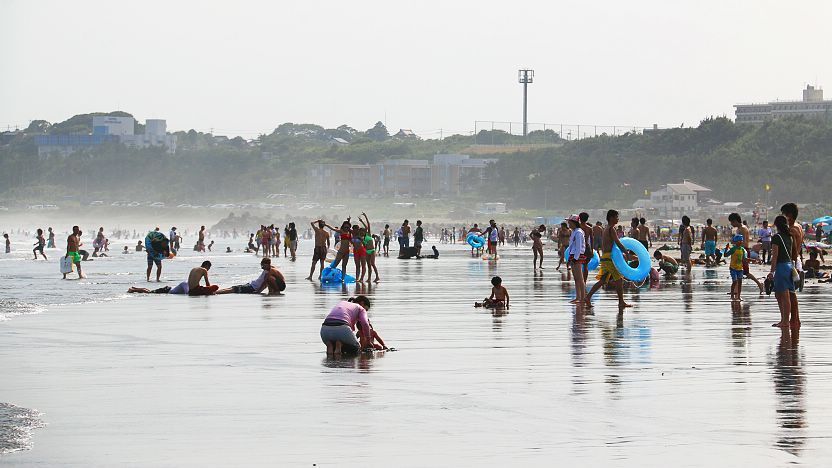Beaches in Ibaraki

The entire eastern side of Ibaraki Prefecture faces the Pacific Ocean, and the beaches that line the coast typically have shallow waters, are wide and spacious, and do not feel as crowded compared to the ones closer to Tokyo. The tides tend to be strong, drawing surfers and body boarders. Note that children are not allowed to enter the waters on their own at most of the beaches as the currents may take them out despite the shallow waters.
The swimming season in Ibaraki is typically from mid July through August, very similar to the season at other beaches around Tokyo. Beach huts and rental shops can be found at or near many beaches and are typically open only during the swimming season. These places provide beachgoers with showers, changing rooms, shaded rest areas, food and drinks. Lifeguards patrol the beaches during the summer swimming season.

Getting there and around
A few of the popular beaches in Ibaraki are easily accessed by public transportation, but many of them are better accessed by car. For those who are arriving by car, note that limited paid parking may be found nearby with daily rates starting from 1000 yen or at hourly parking spots located further away.
Mito City lies roughly in the middle of Ibaraki Prefecture, not far from the coastline. The city's main station, Mito Station, is connected with central Tokyo (Ueno, Tokyo and Shinagawa stations) by frequently departing trains along the JR Joban Line (about 2 hours, 2310 yen one way). Limited express trains reduce the journey to about 80 minutes, but costs around 4000 yen one way. The trains are covered by the Japan Rail Pass and Tokyo Wide Pass. From Mito Station, the JR Joban Line continues further north into the prefecture while the Kashimarinkai Railway connects to the southern coastline.

Questions? Ask in our forum.







